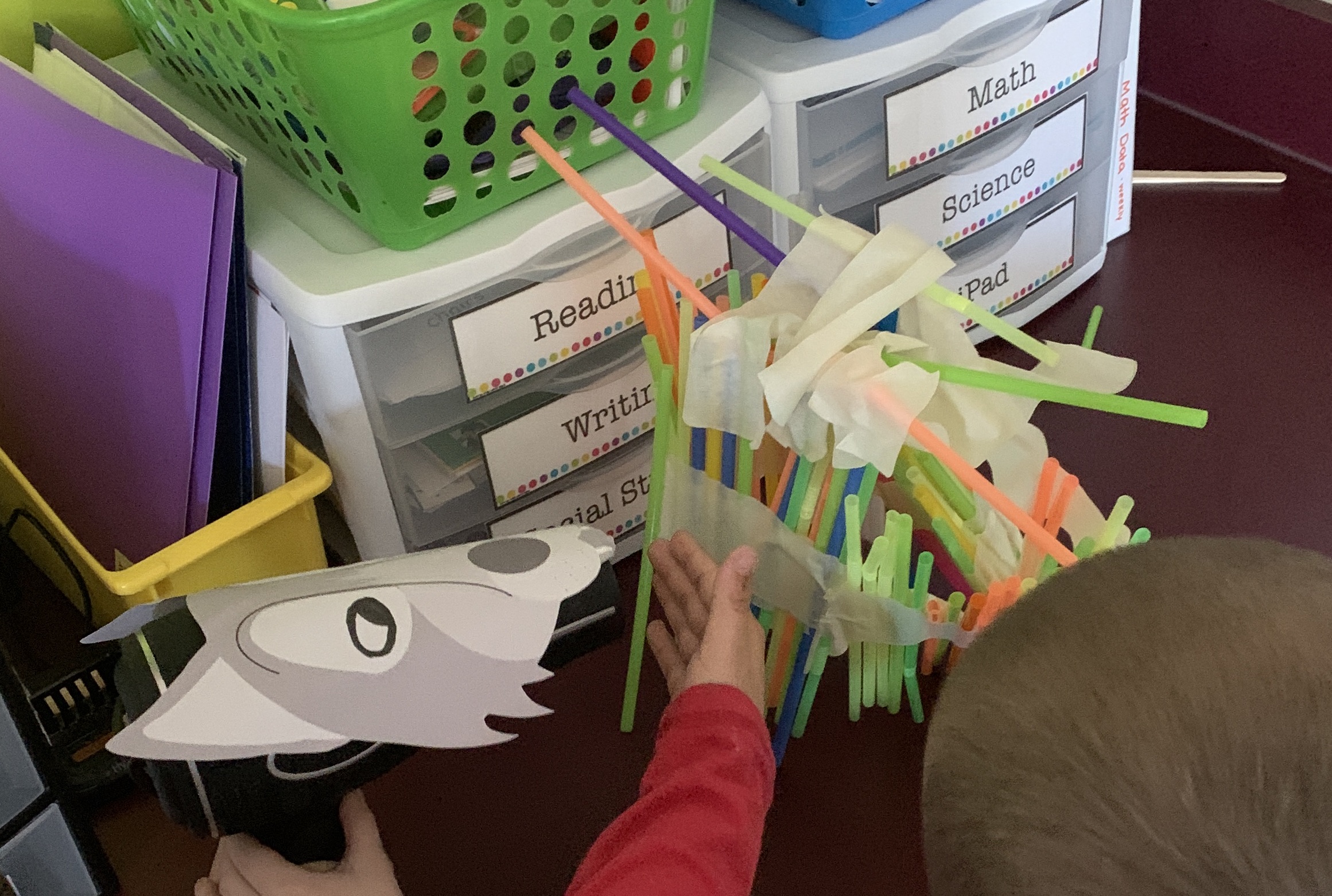Test and improve prototypes in a design process| Saving the 3 Little Pigs | K-2

Student Objective
Students will be able to:
-utilize a deliberate Design Process to build and produce a solution to a common problem
-develop, test and refine (improve) a prototype or initial design as part of the Design Process
Instructions
This instructional idea is a Language Arts specific extension to the 4a: Know and use a deliberate design process | Little Engineers | K-2 activity
Materials needed for this activity:
- computer
- chart paper or the chart image provided within the activity
- hair dryer
- sticks (popsicle sticks)
- straws
- legos
- tape
*any of these materials can be substituted for similar items
Step 1: Generate a connection and add context for using the Engineering Design Process in this activity
Read any version of The Three Little Pigs that features the materials in which the pigs built their houses and the “Big Bad Wolf” that blows their houses down and eats the pigs. Here is a short video with the simplified story. Have the students identify the main characters and retell the story.
For the next few steps ,you will be referring to the Engineering Design Process.
You can use one of these pre-made charts [basic or detailed] or one of your own to display the steps of the Engineering Design Process.
You can also use this powerpoint presentation to use and follow throughout the activity.
Step 2: Define the pigs’ problem and introduce the Engineering Design Process in this context.
The first step of the Design Process is “Ask”: Work with the students to help ask and generate the problem the pigs are facing- the Big Bad Wolf keeps blowing down their houses and eating them. Now the students need to help solve that problem for the pigs by building a house for one of the pigs that will withstand the breath of “The Big Bad Wolf” (a hair dryer).
Step 3: Define a pig’s problem and introduce the Engineering Design Process in this context.
The second step of the Design Process is “Imagine”: Assign each group or student with one of the 3 materials from the story (straw, sticks or bricks). For this activity, the students can use substitutes for these materials like straws, popsicle sticks and legos, as well as tape. Have the students work together to design and build their first house for their pigs. Make sure you explain that each house must have 4 walls and a roof to protect the pigs. For a challenge, you can also ask the students to provide a way for the “pigs” to get in and out of the house.
Step 4: Test the houses against “The Big Bad Wolf”
The third step of the Design Process is “Create” and add “Test”: Explain to the students that they will be testing their houses against the wind of “The Big Bad Wolf” which is a hair dryer. Part of the design process is to continue to make things better and stronger. So, they will be testing and improving their houses at least 2-3 times. So, even if their houses withstand the wind the first time, they will need to figure out how to make it stronger. Help each group or student test their houses with the hair dryer for 5-10 seconds. For continuation, make sure each house is tested for the same amount of time in the same direction.
Step 5: Improve the first design
The fourth step of the Design Process is “Improve”: The students will work on improving their initial designs. Help students recognize where things could be strengthened. These can be identified as new problems that need to be solved. They may use their original house as a foundation, but will be repeating the same process (design, test and improve) because the Design Process is cyclical. Give the students enough time to make their homes better before testing them again.
Step 5: Test their improved homes
Use the same hair dryer, timing and position to test their upgraded designs. Comment on the changes and results. You can repeat Steps 4 and 5 as many times as you would like.
Step 6: Discuss and Reflect
Have students reflect on their experience, the changes they made and how those changes effected the results against the air from “The Big Bad Wolf”. The students could record their reflections in a shared document, a shared platform (like Padlet) or an online form before sharing with their classmates. The reflections can be shared and discussed as a class, with a focus on developing and testing prototypes for continued improvement.
Tips for introducing younger students to collaborating and creating 1 project together, with minimal conflict.
Justification
This instructional idea walks the students through the Engineering Design Process in a fun and relevant context. The students work to design, test and improve original "houses" to help save the 3 little pigs. The testing is deliberate and utilizes a tool that the students can use easily.
